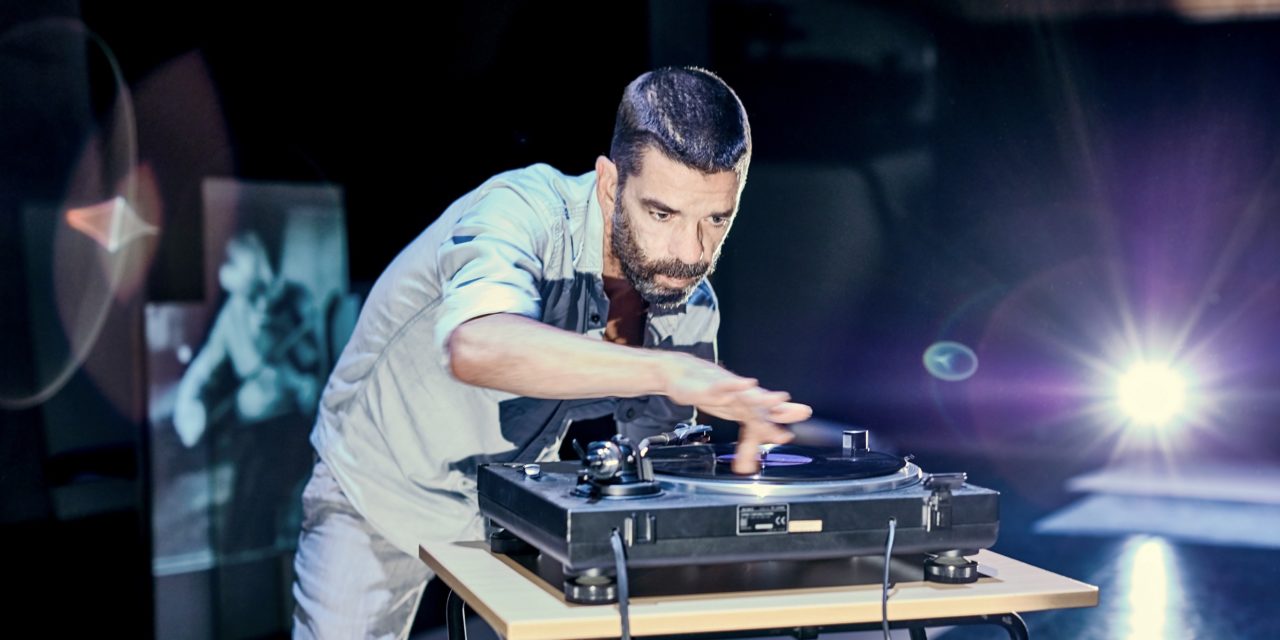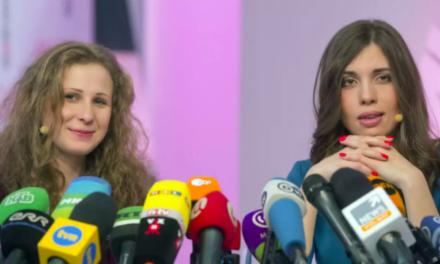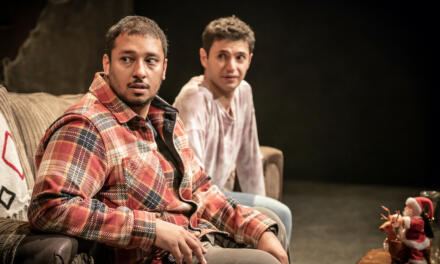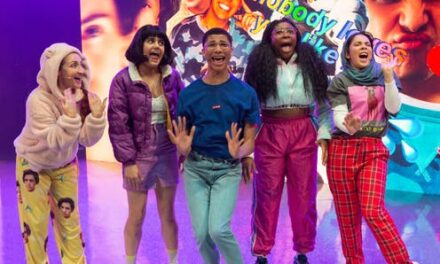Concert, By Colin Dunne, Dance Umbrella Festival 2018, London, Barbican
The important thing about rhythm is not what we do, but what we don’t do.
Standing center stage, leading Irish and contemporary dancer Colin Dunne demonstrates the magical transition from a quotidian jog to an Irish dance step, simply by leaving out every fourth step.
Rhythm is the core idea of his piece, Concert, the dancer’s response to virtuosic Irish fiddler Tommie Potts’ album The Liffey Banks (1972). Movement, music, speech, set, and narrative structure are fragmented, leaving the audience in a constant state of unfulfilled rhythmic desire–to hear the end of the tune, the conversation; to see the end of the dance.
Colin Dunne is an Irish contemporary dancer who has crossed over from the Irish folk-dance tradition, of which he has been a leading proponent, into contemporary theatrical forms. He returns to the Irish folk routes with this piece that responds to the seminal album made by Tommie Potts, the only commercial recording he made. Potts had a reputation for creatively reimagining traditional tunes in both melody and rhythm–Dunne demonstrates this with a somewhat unexpected move to the upright piano at one point during the piece–which famously made his music difficult to dance to.
After an informal, chatty introduction (throughout which he keeps up an impressively steady jog), Dunne leads our attention to the turntable on a plinth, and begins a tight, personal and intricate danced response to the solo fiddle music, following its unpredictable accents and asymmetrical rhythms. But just as we relax into this, the fiddle tunes, emanating apparently from the turntable, jolt, jump, and founder as Dunne himself increases the energy of his danced responses, as if the vinyl itself has been affected by his kicks and jumps.
This play with sound, with a remarkably complicated design by Mel Mercier, continues throughout the piece. Moments of the Potts recording are edited, tracked, looped and cut live as Dunne responds with an idiosyncratic movement style reflecting these fragmented rhythms. At times, my back-row seat did not allow a particularly good view of Dunne’s complex footwork, so I shifted my gaze to the rest of his body, noticing the counterpoint of viscous fluidity of his shoulders and torso, ending in decisive flicks of his left wrist as accent marks to the quick weight-shifts of the footwork.
Dunne seeks out interstitial moments from the archive of Potts’ recorded sounds, such as recordings of fragmentary musical doodles, whistling of parts of tunes, fragments of interviews, which Dunne joins in conversation in a somewhat clunky part of the piece. Potts’ interpretation of the traditional tunes is “fragile, unpredictable, slidey” and indeed, Dunne states that Potts’ playing was not meant for dancing. His piece appears to be an intention to make visible, maybe even visceral, Potts’ music. Speakers around the stage, some fixed and some mobile, are carefully lit by Colin Grenfell as if they are playing the opposite in this solo two-hander.
Concert gives Dunne an opportunity to explore and dig deep into his technical roots. He begins barefoot, shifting his weight quickly and delicately, creating a minimal sound disturbance to the clean fiddle tones of Potts’ solo playing. Later on, Dunne tapes radio mics to the bottoms of his step shoes to allow the creation of an astonishing sound world, where swishes, stamps, and shuffles are sonically illuminated by live mixed reverb and other sound effects.
However, this is far from a technical showpiece: we are witnessing an emotional and personal connection playing out in this strange and fragmentary journey. Dunne shows a human being on stage. His fierce musicality and commitment to rhythm, alongside not just a streak of defiance about the oft-neglected intricacy of Irish folk music and dance, translate into a moving, fearless, and individual ode to a fellow artist, and to the genre they both represent.
Concert
Creation: Colin Dunne, Sinéad Rushe, Mel Mercier
Choreography: Colin Dunne
Direction: Sinéad Rushe
Sound: Mel Mercier
Lighting: Colin Grenfell
Film: Jeffrey Weeter
Miranda Laurence is a freelance dance dramaturg based in the UK. She has been awarded a grant from Arts Council England for professional development as a dance dramaturg in 2017–18. She works with dance artists across the UK and also internationally (most recently with Finnish choreographer Johanna Nuutinen, enabled by an award from South East Dance). Miranda has also directed the Dance & Academia project based in Oxford since 2008, convening a number of seminars and conferences engaging movement practitioners and academics in many different disciplines. The current theme for the series is the provocative question “What is Dance without an Audience?” Alongside her freelance practice, Miranda is employed as Arts Development Officer at Reading University, where she is devising an arts strategy for the university.
This post was written by the author in their personal capacity.The opinions expressed in this article are the author’s own and do not reflect the view of The Theatre Times, their staff or collaborators.
This post was written by Miranda Laurence.
The views expressed here belong to the author and do not necessarily reflect our views and opinions.


















